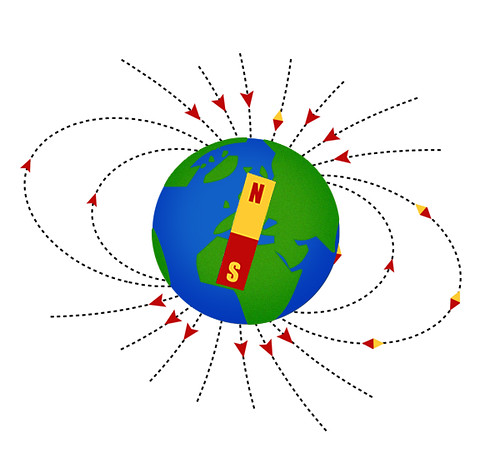Context:
Recently, Geologists from MIT and Oxford University have discovered ancient rocks in Greenland containing the earliest traces of Earth’s early Magnetic Field.
Key highlights
- The researchers determined that the rocks, approximately 3.7 billion years old, still retain evidence of a magnetic field with a strength of at least 15 microtesla, akin to Earth’s present-day magnetic field.
- Earlier research indicated a magnetic field dating back at least 3.5 billion years, but this study extends its existence by an additional 200 million years.
- One of the authors suggested that if Earth’s magnetic field existed a few hundred million years earlier, it might have been crucial for the planet’s habitability.
- Scientists hypothesize that Earth’s early magnetic field that was strong enough to retain a life-sustaining atmosphere and simultaneously shield the planet from damaging solar radiation that likely facilitated the emergence of life.
- The researchers aimed to find rocks preserving the Earth’s ancient magnetic field when the rocks first formed.
- They sampled rock formations in Greenland’s Isua Supracrustal Belt, hoping to find unaltered rocks since their formation.
- The MIT team collected striped rocks from Greenland (which are rich in iron and silica), researchers used uranium-lead dating to estimate the rocks’ age.
- It concluded that some magnetized minerals were approximately 3.7 billion years old, with a magnitude of at least 15 microtesla.
- Today, Earth’s magnetic field measures around 30 microtesla.
Microtesla
A microtesla (µT) is a SI-unit of the magnetic flux density unit tesla and equal to one-millionth of a tesla (0.000 001 T)

About Earth Magnetic Field
- Earth’s magnetic field also known as the geomagnetic field.
- It is generated in our planet’s interior and extends out into space, creating a region known as the magnetosphere.
- Without the magnetic field, life on Earth as we know it would not be possible as it shields us all from the constant bombardment by charged particles emitted from the sun, the solar wind.
- Its magnitude at the Earth’s surface ranges from 25 to 65 microteslas.
- The Earth’s magnetic field arises from electric currents created by the movement of molten iron and nickel in the planet’s outer core. This movement is driven by convection currents, which occur as heat escapes from the core (a phenomenon referred to as the geodynamo).
- Earth has two sets of poles, geographic poles and magnetic poles.
- Earth’s magnetic field can be visualized if you imagine a large bar magnet inside our planet, roughly aligned with Earth’s axis.
- Each end of the magnet lies relatively close (about 10 degrees) to the geographic North and South poles.
- Earth’s invisible magnetic field lines travel in a closed, continuous loop and are nearly vertical at each magnetic pole.


